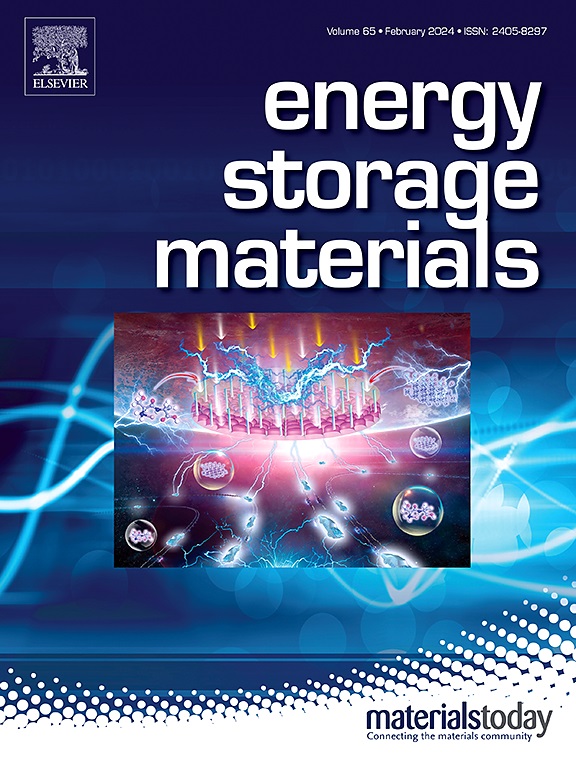Dual-interface engineering via boron pre-anchoring and electronegative synergy for coupled ion transport and self-stabilizing interphases in lithium metal batteries
IF 20.2
1区 材料科学
Q1 CHEMISTRY, PHYSICAL
引用次数: 0
Abstract
Lithium metal anodes hold immense promise for next-generation high-energy-density batteries due to their outstanding theoretical capacity and low electrochemical potential. Despite these advantages, their practical implementation remains restricted by the unstable solid electrolyte interphase (SEI) and the uncontrollable lithium dendrite growth, which compromise cycling stability and safety. In this work, we propose a dual-interface engineering approach involving boron pre-anchoring in lithium anodes and coordination with electronegative components. This design establishes coupled mechanisms for ion transport optimization and self-stabilizing interphase formation through a hierarchical interface architecture. Theoretical simulations reveal that pre-embedded boron atoms lower the adsorption energy for lithium-ion diffusion while directing homogeneous metal deposition. Consequently, symmetric cells deliver stable Li plating/stripping behavior for over 2500 h at 0.5 mA cm-2. Full cells paired with LiCoO2 retain 92 % capacity after 200 cycles, while Li-B||NCM811 pouch cells (6.5Ah) exhibit a high energy density of 526 Wh kg⁻¹ and maintain 95 % capacity retention after 60 cycles. The interfacial design principles provide a blueprint for synchronizing ion transport kinetics and chemical stability in high-performance lithium metal batteries.


基于硼预锚定和电负协同的锂金属电池离子输运和自稳定界面双界面工程
锂金属阳极由于其出色的理论容量和较低的电化学电位,在下一代高能量密度电池中具有巨大的前景。尽管有这些优点,但它们的实际应用仍然受到不稳定的固体电解质界面(SEI)和不可控的锂枝晶生长的限制,从而影响了循环的稳定性和安全性。在这项工作中,我们提出了一种双界面工程方法,涉及硼在锂阳极中的预锚定和与电负性成分的配位。本设计通过层次化的界面结构建立了离子输运优化和自稳定界面形成的耦合机制。理论模拟表明,预嵌硼原子降低了锂离子扩散的吸附能,同时指导了均匀金属沉积。因此,对称电池在0.5 mA cm-2下提供超过2500小时稳定的镀锂/剥离行为。与LiCoO2配对的完整电池在200次循环后保持92%的容量,而Li-B||NCM811袋电池(6.5Ah)在60次循环后表现出526 Wh kg的高能量密度并保持95%的容量保留。界面设计原理为高性能锂金属电池同步离子传输动力学和化学稳定性提供了蓝图。
本文章由计算机程序翻译,如有差异,请以英文原文为准。
求助全文
约1分钟内获得全文
求助全文
来源期刊

Energy Storage Materials
Materials Science-General Materials Science
CiteScore
33.00
自引率
5.90%
发文量
652
审稿时长
27 days
期刊介绍:
Energy Storage Materials is a global interdisciplinary journal dedicated to sharing scientific and technological advancements in materials and devices for advanced energy storage and related energy conversion, such as in metal-O2 batteries. The journal features comprehensive research articles, including full papers and short communications, as well as authoritative feature articles and reviews by leading experts in the field.
Energy Storage Materials covers a wide range of topics, including the synthesis, fabrication, structure, properties, performance, and technological applications of energy storage materials. Additionally, the journal explores strategies, policies, and developments in the field of energy storage materials and devices for sustainable energy.
Published papers are selected based on their scientific and technological significance, their ability to provide valuable new knowledge, and their relevance to the international research community.
 求助内容:
求助内容: 应助结果提醒方式:
应助结果提醒方式:


